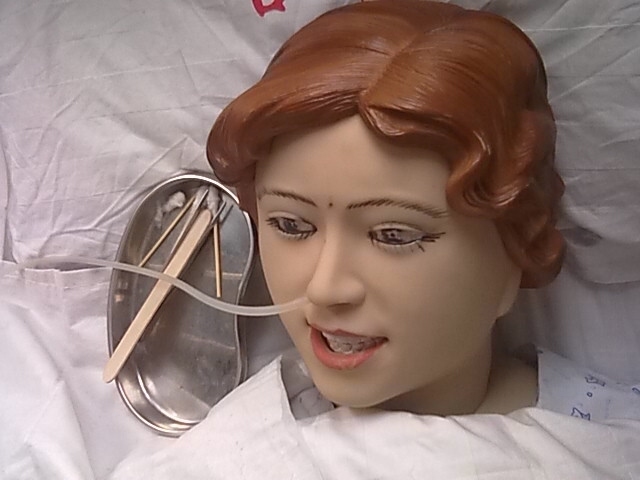You should pay close attention to your patients' safety.
你需要密切注意患者的安全。
So, please remember the following important points.
所以請嚴格遵守以下幾點。
Always raise the head of the bed at least 30 degrees for a patient when he is receiving tube feedings.
在接受胃管喂食時,記得將病床頭部向上傾斜至少30度。
The possibility of choking can be reduced this way.
這樣可以降低患者喉嚨被卡的幾率。
Suction equipment should always be there at the bed side.
床邊必須備有抽吸設備。
Never force irrigating solution or nasogastric feeding into a patient's tube.
永遠不要強行往患者的胃管中注水或者食物。

If you find the difficult to feed the patient, tell the doctor.
如果喂食有困難,告知醫(yī)生。
Before doing irrigations or feedings, always make sure the placement of nasogastric tube in the stomach.
喂水和食物之前,確保胃管導出位置是在胃部。
Following this practice, and you will make it not so easy for the liquid to enter the lung.
按照這種做法,你有不太可能會把液體注入患者肺中。
Such things often happen if the tube is displaced.
如果胃管錯位,這種事情很可能發(fā)生。
Always look at the expiration date of tube feedings carefully.
一定要注意喂給患者食物的保質(zhì)期。
They also should not be allowed to hang for more than the prescribe time.
如果超過了保質(zhì)期則不應該再使用。
These fluids provide a positive median for the growth of bacteria.
這些物質(zhì)會成為細菌的溫床。
When patients receive tube feedings, the nurse should look out for signs of respiratory difficulty and for diarrhea or constipation. If you notice any of these conditions, report them to the doctor.
在用胃管喂食時,護士應該觀察患者呼吸困難現(xiàn)象,以及腹瀉和便秘。如果發(fā)現(xiàn)以上某種情況,告知醫(yī)生。
譯文屬可可原創(chuàng),僅供學習和交流使用,未經(jīng)允許不得轉(zhuǎn)載











